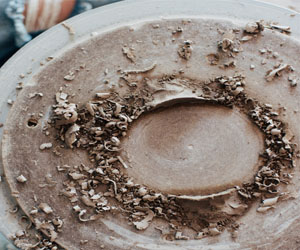


Creativity, Skill, And Personal Fulfillment

Woodworking projects are a rich tapestry of creativity and craftsmanship, offering an outlet for personal expression, practicality, and artistic achievement. Whether you're a seasoned woodworker or just starting on your journey, the world of woodworking projects offers an array of exciting opportunities to create, learn, and ultimately, experience the satisfaction of turning raw lumber into functional or decorative masterpieces. In this article, we explore the diverse and enriching realm of woodworking projects.
Limitless Creativity: Woodworking projects provide a platform for limitless creativity. From crafting custom furniture pieces that blend seamlessly with your home's decor to designing unique wooden sculptures that captivate the imagination, there are no boundaries when it comes to the artistic possibilities. Woodworkers have the privilege of transforming their ideas and visions into tangible forms, resulting in projects that reflect their own unique style and personality.
Practicality Meets Artistry: Woodworking is not solely about artistic expression. Many projects fuse practicality with artistry. Whether you're building a sturdy bookshelf, a functional workbench, or a custom kitchen cabinet, your creations are designed to enhance daily living while showcasing the craftsmanship behind the work. This blend of form and function adds depth to the world of woodworking projects, where utility meets aesthetics.
The Learning Curve: Woodworking projects encompass a wide spectrum of complexity, catering to beginners and experts alike. For those new to the craft, simple projects like wooden coasters or picture frames offer an excellent starting point. As you gain confidence and experience, you can gradually advance to more intricate endeavors, such as crafting intricate tables, intricate cabinetry, or ornate carvings. The learning curve is part of the appeal, encouraging woodworkers to expand their skills and knowledge.
A Sense Of Accomplishment: The completion of a woodworking project brings a profound sense of accomplishment. Watching a pile of lumber transform into a polished, finished product is a source of immense pride and satisfaction. Each project represents a personal achievement and a testament to the dedication and skill that went into its creation.
Customization And Personalization: One of the most significant advantages of woodworking projects is the ability to customize and personalize your creations. Whether you're building a unique gift for a loved one or constructing a piece of furniture that perfectly fits your space, woodworking empowers you to tailor your projects to specific needs and preferences.
Community And Sharing: Woodworking is not a solitary pursuit; it's a community. Many woodworkers enjoy sharing their projects with like-minded individuals, whether it's through local woodworking clubs, online forums, or social media platforms. The camaraderie and shared passion foster an environment where ideas, knowledge, and experiences are freely exchanged.
Woodworking projects encompass a universe of creativity, skill development, and personal satisfaction. They allow individuals to embark on a journey of self-expression, functional design, and artistic exploration. Whether you're crafting a simple item or a complex masterpiece, woodworking projects provide a medium through which you can bring your ideas to life and leave a lasting mark in the world of craftsmanship and artistry.
Unlocking Beauty With Natural Ingredients
 Healing With Herbs: Herbs have been used for centuries in traditional medicine and beauty practices. Ingredients like chamomile, calendula, and lavender possess anti-inflammatory and healing properties, making them ideal for calming irritated skin and promoting an even complexion.
Healing With Herbs: Herbs have been used for centuries in traditional medicine and beauty practices. Ingredients like chamomile, calendula, and lavender possess anti-inflammatory and healing properties, making them ideal for calming irritated skin and promoting an even complexion.
The Miracle Of Essential Oils: Essential oils are concentrated extracts from plants and are known for their therapeutic properties. Lavender, tea tree, and rosehip oils are excellent choices for skincare, offering benefits such as acne reduction, scar healing, and anti-aging effects.
Fruit Extracts: Fruits like papaya, pineapple, and citrus fruits contain natural enzymes and acids that gently exfoliate the skin, leaving it brighter and more radiant. They are commonly found in natural peels and masks.
The Green Beauty Revolution: The natural beauty movement has given rise to the concept of "green beauty." Green beauty emphasizes the use of clean, natural, and eco-friendly ingredients. Many beauty companies are now formulating products without harmful chemicals, ensuring they are safe for both individuals and the environment.
DIY Beauty: For those who prefer a hands-on approach, DIY beauty using natural ingredients is becoming increasingly popular. Homemade masks, scrubs, and serums can be easily prepared with ingredients from your kitchen or garden, allowing you to tailor them to your specific skincare needs.
Holistic Approach: Natural beauty ingredients are not just about external application; they can also be part of a holistic approach to health and well-being. A balanced diet rich in fruits and vegetables can improve skin and hair health from the inside out.
An Artistic Masterpiece In Thread
 Versatility In Design: One of the satin stitch's most appealing features is its versatility. It can be used to create a wide range of designs, from simple geometric shapes to intricate, lifelike images. Whether you are working on floral motifs, animal figures, or abstract patterns, the satin stitch allows for artistic expression in various forms.
Versatility In Design: One of the satin stitch's most appealing features is its versatility. It can be used to create a wide range of designs, from simple geometric shapes to intricate, lifelike images. Whether you are working on floral motifs, animal figures, or abstract patterns, the satin stitch allows for artistic expression in various forms.
Achieving Dimension And Texture: While the satin stitch is celebrated for its smoothness, it also has the potential to add dimension and texture to embroidery projects. By altering the stitch length or layering stitches in different directions, artists can create the illusion of depth and detail, bringing designs to life.
The Importance Of Thread Selection: Thread selection is crucial when using the satin stitch. Traditional satin stitch threads include silk and rayon due to their sheen and luster. Modern options also include polyester threads that are known for their durability and colorfastness. Thread color choice plays a significant role in the overall impact of the satin stitch, enabling the creation of realistic gradients or bold, contrasting patterns.
Challenges And Techniques: While the satin stitch is beautiful, it's not without its challenges. Ensuring consistent stitch length and alignment requires practice and attention to detail. Embroiderers often use a laying tool or a frame to keep the threads smooth and untangled while stitching.
Nurturing Nature And Your Garden
 The Essence Of Sustainability In Herb Cultivation
The Essence Of Sustainability In Herb Cultivation
Sustainable herb cultivation involves growing herbs in a manner that minimizes environmental impact, conserves resources, and promotes long-term garden health. This approach takes into consideration the entire lifecycle of the garden, from planting and maintenance to harvest and beyond.
Sustainable Herb Cultivation Practices
Organic Gardening: The foundation of sustainability in herb cultivation is organic gardening. Avoid synthetic pesticides and fertilizers, opting instead for natural and organic alternatives. This practice ensures that your herbs are free from harmful chemicals.
Water Conservation: Use water wisely by installing efficient irrigation systems like drip hoses or soaker hoses. Collect rainwater for irrigation to reduce dependence on municipal water supplies.
Composting: Create your compost heap to recycle kitchen scraps and garden waste. Compost enriches the soil, reduces the need for synthetic fertilizers, and minimizes landfill waste.
Crop Rotation: Implement crop rotation techniques to prevent soil depletion and minimize the risk of herb-specific diseases. Rotating herbs within your garden beds maintains soil health and vitality.






Elevating Woodworking To The Next Level
 Unparalleled Beauty: Hardwood is prized for its unparalleled beauty. The wood's grain patterns, color variations, and intricate figuring make it an ideal choice for crafting. Whether you're creating fine furniture, ornate carvings, or decorative inlays, the natural aesthetics of hardwood add a level of elegance and sophistication that is unmatched.
Unparalleled Beauty: Hardwood is prized for its unparalleled beauty. The wood's grain patterns, color variations, and intricate figuring make it an ideal choice for crafting. Whether you're creating fine furniture, ornate carvings, or decorative inlays, the natural aesthetics of hardwood add a level of elegance and sophistication that is unmatched.
Durability And Longevity: Hardwood is renowned for its durability. It can withstand the test of time, making it an excellent choice for heirloom-quality pieces. Items crafted from hardwood are not only beautiful but also practical and built to last. This longevity is one of the reasons why woodworking enthusiasts and artisans alike gravitate towards hardwood.
Rich Selection Of Species: One of the remarkable features of crafting with hardwood is the vast selection of wood species available. Each species offers unique characteristics in terms of color, grain, hardness, and workability. From the deep, warm hues of mahogany to the light, creamy tones of maple, there is a hardwood species to suit every project and style.
Versatile Applications: Hardwood is highly versatile and can be used in a wide range of applications. It's suitable for crafting fine furniture, cabinetry, flooring, musical instruments, and even intricate carvings.
Shaping Civilizations From Clay
 Neolithic Advancements: The Neolithic period (circa 10,000 to 2,000 BCE) marked a significant leap in the history of pottery. During this time, humans developed agriculture, leading to the need for more efficient food storage and preparation. This spurred the refinement of pottery techniques and the introduction of pottery wheels for shaping clay. Various cultures worldwide, from ancient China to Mesopotamia, independently discovered pottery and ceramic techniques that would continue to evolve over the millennia.
Neolithic Advancements: The Neolithic period (circa 10,000 to 2,000 BCE) marked a significant leap in the history of pottery. During this time, humans developed agriculture, leading to the need for more efficient food storage and preparation. This spurred the refinement of pottery techniques and the introduction of pottery wheels for shaping clay. Various cultures worldwide, from ancient China to Mesopotamia, independently discovered pottery and ceramic techniques that would continue to evolve over the millennia.
Egypt And Mesopotamia: Two of the world's earliest advanced civilizations, Egypt and Mesopotamia, played pivotal roles in the history of pottery. In ancient Egypt, pottery was not only used for practical purposes but also for religious and artistic expression. The Egyptians produced ornate and finely glazed ceramics, including funerary objects and sculptures.
In Mesopotamia, the cradle of civilization, clay tablets were employed for writing, while pottery was used to store and transport valuable commodities. The invention of the potter's wheel in this region revolutionized ceramic production and allowed for greater consistency and intricacy in design.
Greek And Roman Contributions: The Greeks elevated pottery to an art form. Their beautifully painted pottery, featuring intricate designs and intricate depictions of daily life and mythology, are now highly sought-after by collectors and historians. Greek pottery remains an enduring legacy of their artistic achievements.
The Romans continued the tradition of fine ceramic work, adopting Greek influences and creating their own distinctive styles. Roman pottery production was highly organized, and their ceramics were traded and exported throughout the vast Roman Empire.
The Far East: In China, pottery and porcelain have an ancient history that spans thousands of years. Chinese ceramics are celebrated for their craftsmanship, innovation, and exquisite glazes. The porcelain produced in China was highly prized along the Silk Road, leading to cultural exchanges between the East and West.